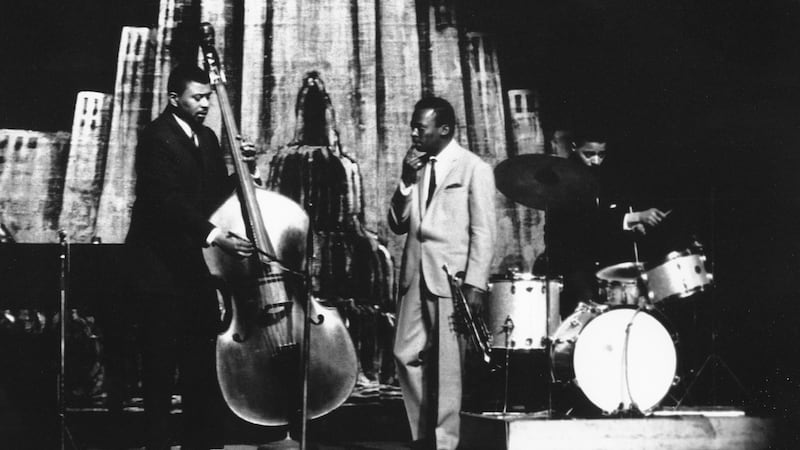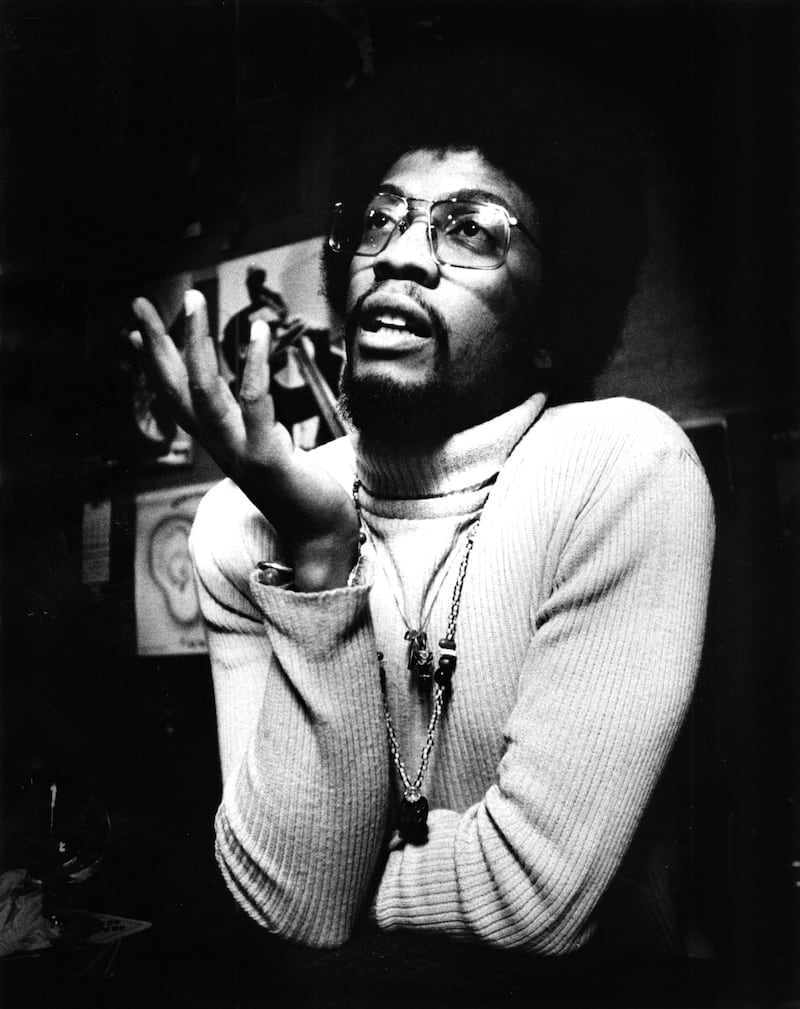
By the age of 22, Miles Davis “had become a name to conjure with – then and forever after, the single word ‘Miles’ told many people all they seemed to need to know about jazz”. In James Kaplan’s stylishly narrated, compulsively engaging chronicle of the art form of jazz between the years of 1942 and 1967 and the lives of three of the men who came together to make an album entitled Kind of Blue, Miles inevitably takes centre stage.
Although initially, it was far from clear that this would be the case. Miles came to New York from Alton, Illinois aged 19, studied at Juilliard, ran his mouth at every opportunity and then, astonishingly to those on the scene, replaced Dizzy Gillespie in Charlie Parker’s band. Astonishingly because Miles did not and could not play the trumpet high and fast like Dizzy – when Parker came to record the Savoy sessions, Davis recused himself from playing on the Ko-Ko – he simply didn’t have the chops.
But rather than lacking in virtuosic facilities, Davis was charting a new way forward: “a way of leading by playing with exquisite lyricism, at medium volume and in the middle of the trumpet’s range”. The commentator Loren Schoenberg told Kaplan that the reason Parker hired Miles was “the same reason Miles hired John Coltrane … he heard a diamond in the rough”. Miles would demonstrate the same talent-spotting gift repeatedly across the development of so many great bands, including the Nonet, the two quintets and the Kind of Blue sextet: the facility to see (when others could not) the potential of a musician, and to trust them to develop.

At times the book reads like a series of iterations of the hero and companions stage in the classic quest plot. Miles is still with Parker but wearying of his drug and ego-related unreliability when who should come to town but Gil Evans, trailing his reputation as an innovative arranger for Claude Thornhill. Evans had the same taste for modernist classical music that Parker had, but where Parker was “hopelessly leashed to his appetites and addictions”, Evans was able to nurture and enable Miles Davis’s “lifelong quest for collaboration and musical meaning”.
READ MORE
Gerry Mulligan had already been in conversation about a “dream band”; in 1949, the band assembled and Miles made it happen. While they didn’t sell at first, the eventual influence of the Nonet’s recordings as the retitled Birth of the Cool would be substantial, first on the post-Bebop style known as West Coast jazz, and later as prototypes for Evans’s and Davis’s future collaborations.
Davis almost immediately lost interest in the “cool” style, and then spent the next five years framing its East Coast alternative, with intermittent sessions for Prestige and Blue Note leading towards the 1954 recordings that would be released in album form called Walkin’, thus helping, in Gary Giddins’s words, to “spur and codify the counter-reformation known as ‘hard bop’”. Five years? What took this restless, mercurial genius quite so long? In a word, heroin.
Kaplan is attentive throughout the book to the three challenges a jazz musician of the era faced: to make an artistic name for himself, to make a living in harmony with that art, and to get off and stay off heroin. (In our Quest formulation, narcotics are the monsters and temptations our heroes can expect to meet along the way.) “Bird’s genius was so otherworldly, and his heroin use so blatantly extreme, that it was hard for young players … not to see heroin as the royal road to jazz mastery.”
John Coltrane’s addiction came from a place of loss and deep sadness – ‘desperate, furtive and ashamed, it didn’t fit the into the cool model of jazz culture’
After several chaotic, squalid attempts, Miles’s successful escape from heroin’s grasp coincided with Bird’s death at the age of 34 in 1955; the royal road had turned out to be a dead end. Now, as Giddins puts it, while Davis “rejected cool jazz, he came to personify jazz cool” – in the way he played and dressed and spoke, he embodied the beautiful, careless, angry young man of jazz. His public triumph at the Newport Jazz Festival in the same year led to a generous deal with Columbia Records, whose head of A&R George Avakian had an eye on the mainstream and saw the potential of a drug-free, newly energised Miles as “an artist of enormous appeal to people who know nothing about jazz”.
John Coltrane’s addiction came from a place of loss and deep sadness – “desperate, furtive and ashamed, it didn’t fit the into the cool model of jazz culture”. It became a symptom and cause of his early lack of progress: almost let go by Dizzy Gillespie, fired by his idol Johnny Hodges, his distinctive style was largely established but he was still drifting around the Philadelphia jazz scene in his late twenties with little indication of the revered genius of the music he was to become.
When the saxophonist auditioned for Miles, the two men rubbed each other the wrong way, and Coltrane, not appreciating Miles’s “silence and evil looks”, walked out; Davis ended up practically begging him to join. The great first quintet, with Paul Chambers on bass, Philly Joe Jones on drums and Red Garland on piano, developed a sound – “funky hard bop with a sophisticated edge”, in Ashley Kahn’s words – that “blew everybody out of the water. It literally destroyed West Coast jazz overnight.” The recordings the band made, released as the albums Cookin’; Workin’; Relaxin’; Steamin’; and ‘Round About Midnight – show Davis “at the height of his powers and Coltrane ascending toward his”; Kaplan deems Coltrane’s galvanic burst on ‘Round About Midnight the saxophonist’s first great solo. Pianist Bill Evans would later say that Coltrane might have remained an unknown had it not been for Miles’s belief in his potential.
And then came Bill Evans. Classically trained, obsessed with jazz, interested in moving beyond conventional chord structures toward a more simplified, modal approach, Evans had released a trio debut album that sold a mere 800 copies. But Miles heard in his playing an approach that chimed with his desire to move to the use of fewer chord changes. Milestones, on the 1958 album of the same name, would be the breaking point for the more traditionally minded Red Garland; Bill Evans would become his replacement.
Meanwhile, Miles was now a best-selling recording artist. George Avakian had reunited Davis and Gil Evans, and what Kaplan calls “Evans’s brilliance at finding an artistically rich middle ground between jazz and western classical” sparked the artistic and commercial triumphs Miles Ahead and Porgy and Bess.
Fired again for heroin addiction, this time by Miles, Coltrane, by now a bandleader in his own right, would soon return to the quintet which, with the addition of Cannonball Adderley, was now the Sextet. After Miles and Bill Evans spent time listening together to Ravel and Khachaturian, they would all gather on March 2nd, 1959 in the Thirtieth Street Studio in New York to make a record that Miles said he had “planned … around the piano playing of Bill Evans”. A timeless artistic masterpiece, Kind of Blue would become the best-selling jazz record of all time and a gateway album to the genre for so many.

And then, somewhere between free jazz and The Beatles, the mainstream listenership that Avakian had meticulously cultivated simply drifted away. Sketches of Spain would be a big hit, but the recordings made by the great second quintet, featuring Wayne Shorter, Herbie Hancock, Ron Carter and Tony Williams, while revered by jazz critics (and by this writer), struggled to find an audience. They were attempting, in the words of Gary Giddins, “to make a separate peace amid jazz orthodoxy, modalism, the avant-garde and the rock hegemony”. Rock’n’roll was filling arenas; Miles’s quintet was playing to half-empty clubs.
Coltrane would move from the gripping album Giant Steps to the spiritually intense A Love Supreme and then beyond the horizon into, depending on your perspective, sublime meditative bliss or free jazz obscurity. His early death transformed him into an icon of transcendence and liberation. As for Bill Evans, Kaplan weighs the views of those who believe he showed negligible musical growth after Kind of Blue and those who argue that in resisting change, the pianist drove all the deeper into his own artistic conception.
[ ‘You’re playing like a girl’: Why is jazz still so male?Opens in new window ]
Kaplan frames the book around the Wynton Marsalis/Stanley Crouch view that the move to electronic instruments on 1969′s In A Silent Way that would birth jazz-rock represented a betrayal of the music. While he chides Crouch as a grumpy purist, he dodges the aesthetic argument; the fact that in a prologue Kaplan states that all the jazz he wants or needs was created between 1942 and 1967 gives us a fair indication of his preferences, as does his summation of the bands formed by “Miles’s children” (Weather Report, Return to Forever, Mwandishi): “they kept alive the idea of jazz (or something like it) as entertainment”. (My italics.)
I would have liked greater focus on the pre-fusion careers of Hancock and Shorter, and a more expansive survey of the hard bop scene in the 1960s to include the likes of Lee Morgan and Freddie Hubbard, but Kaplan, author of the definitive two-volume life of Frank Sinatra, captures here in enthralling fashion a remarkable time when some of the greatest art of the 20th century was being made; he has written an eloquent, atmospheric elegy for and a paean to its glories.
Further reading
Visions of Jazz: The First Century by Gary Giddins (Oxford University Press, 1998)
Enthralling collection of the greatest living jazz critic’s Village Voice columns that amounts to an impressionistic history of jazz in 80 witty, erudite, beautifully written essays.
The Birth of Bebop by Scott DeVeaux (Picador, 1999)
A gripping, richly textured social and musical exploration of the evolution of jazz from a popular dance form (swing) into the complex, demanding art music that was bebop.
Rat Pack Confidential by Shawn Levy (Fourth Estate, 1999)
Inspired group biography of Frank, Dean, Sammy and the Other Two, centring around their “summit” at the Sands in Las Vegas, and capturing what Levy calls “the last redoubt of old-time showbiz against the hordes of teen culture”.













